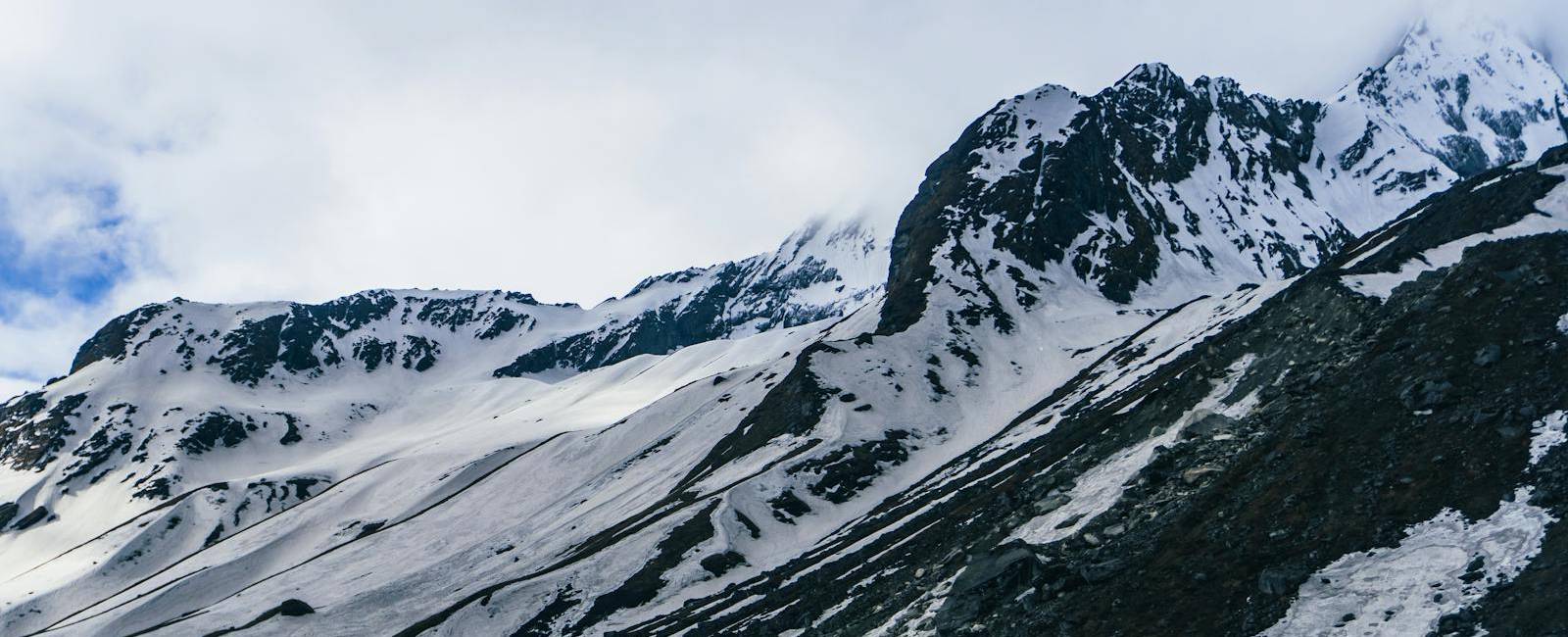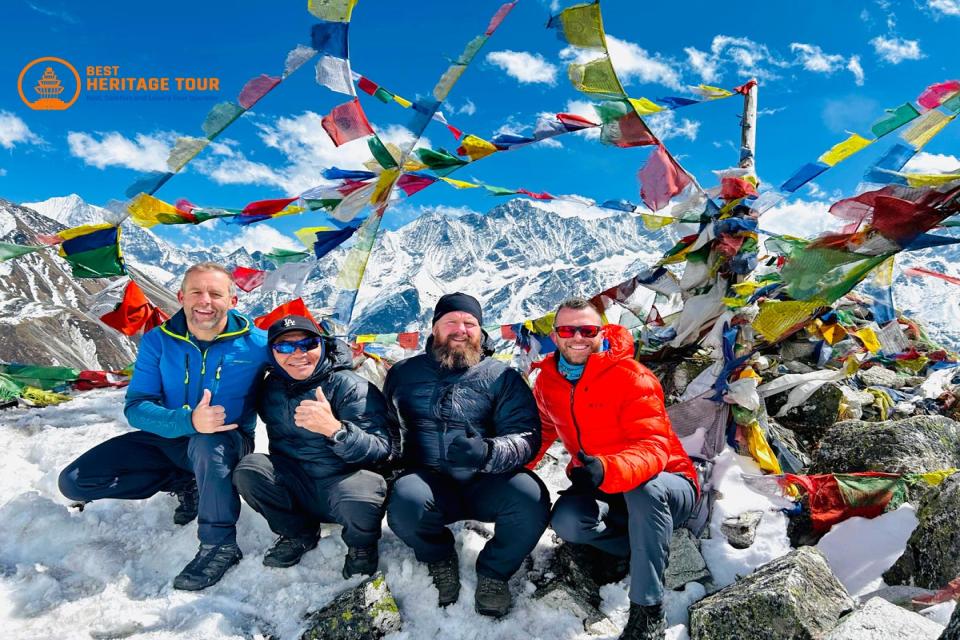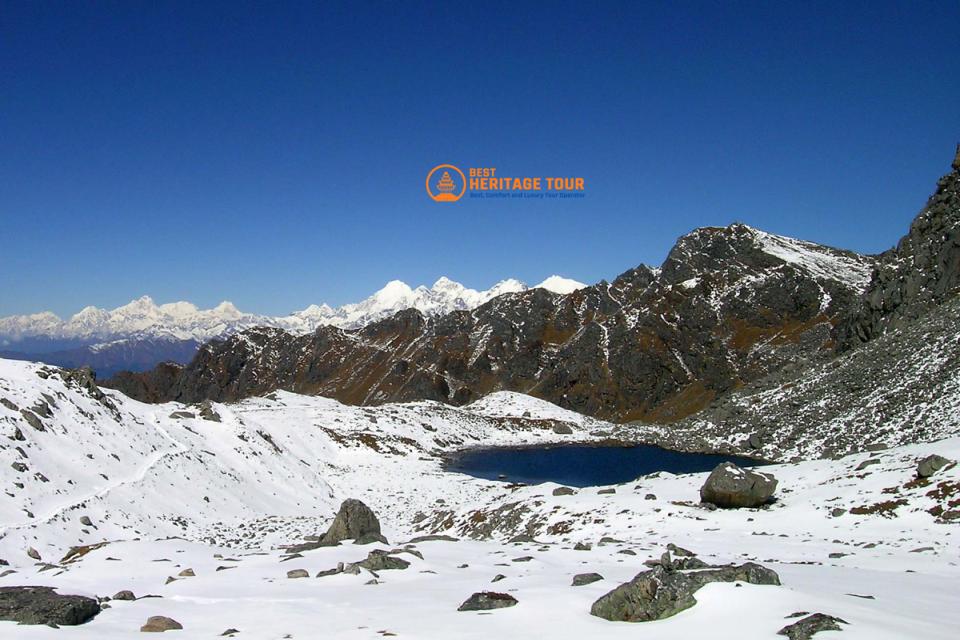The Langtang Gosaikunda Trek is an exceptional journey through Nepal's Langtang National Park, offering breathtaking views of the Himalayan range, lush forests, and high-altitude alpine lakes. As you trek through remote villages, scenic valleys, and rugged trails, proper gear becomes essential for ensuring comfort and safety. With the trek's varied terrain, unpredictable weather, and the need for multiple nights of camping, choosing the right clothing, footwear, camping, and trekking essentials is crucial. Having the right gear allows you to tackle the challenge of this trek confidently, whether you're dealing with rain, snow, or the cold temperatures at higher elevations.
Headgear
-
Sun hat/cap: Protects your face and neck from direct sunlight during the trek.
-
Woolen beanie: Keeps your head warm during chilly mornings and cold nights at high altitudes.
-
Headband/bandana: Useful for shielding your forehead and ears from the sun and wind.
-
UV-protective sunglasses: Protects your eyes from harmful UV rays, especially at higher elevations where the sun can be intense.
Upper Body
-
Moisture-wicking base layer: Helps to keep moisture away from your skin, ensuring you stay dry and comfortable throughout the hike.
-
Fleece or insulating jacket: Provides warmth during cool evenings or mornings, layering well under a waterproof jacket.
-
Down jacket: Essential for keeping you warm at higher altitudes, especially at night when temperatures drop significantly.
-
Waterproof/windproof jacket: Shields you from rain and wind, keeping your upper body dry and warm in unpredictable weather.
-
Thermal underwear (top): Adds an extra insulating layer, ensuring warmth during extremely cold conditions.
Handwear
-
Liner gloves: Lightweight and breathable, perfect for hiking in colder conditions to prevent your hands from freezing.
-
Insulated gloves: Crucial for warmth during freezing conditions, especially at high altitudes where temperatures dip below freezing.
-
Waterproof gloves: Protects your hands from snow or rain, ensuring warmth even in wet conditions.
Lower Body
-
Trekking pants: Lightweight and durable, designed to withstand rough trails while being breathable and quick-drying.
-
Waterproof pants: Keeps you dry in the rain, protecting your lower body from moisture and cold temperatures.
-
Thermal underwear (bottom): Provides added warmth for sleeping or during the cold mornings.
Footwear
-
Trekking boots: Durable and waterproof boots offer ankle support for uneven terrain, and their rugged soles provide traction on rocky paths.
-
Camp shoes: Lightweight shoes or sandals that give your feet a break after long hiking days and are easy to slip on.
-
Trekking socks: Wool or synthetic socks help wick away sweat and reduce the risk of blisters, ensuring your feet stay comfortable.
-
Warm wool socks: Keep your feet toasty during cold nights or at higher elevations.
-
Gaiters: Protect your legs and shoes from mud, snow, and debris, particularly useful in snowy conditions.
Trekking Essentials
-
Main backpack (50-65L): A well-fitting backpack with enough space to carry your gear for the whole trek, while ensuring comfort.
-
Daypack (20-25L): A smaller pack to carry essentials like water, snacks, and a jacket for day trips or side excursions.
-
Water hydration system: Easy-to-access water bladder or bottles to keep hydrated during the trek.
-
Rain cover for backpack: Protects your gear from getting wet in rainy conditions.
-
Trekking poles: Helps with stability and reduces strain on your knees, especially while walking downhill.
-
Headlamp: A reliable headlamp with extra batteries for illumination during early morning starts or late-night use.
-
Portable power bank: Keeps your electronics charged, especially for phone cameras or navigation devices.
-
Camera (optional): For capturing the stunning landscapes and memories of the trek.
-
Map or GPS device: Helps with navigation, especially in remote areas where trails can sometimes be unclear.
-
Sleeping bag (rated for -10°C to -15°C): A high-quality, insulated sleeping bag to keep you warm during cold nights, especially at high altitudes.
-
Sleeping mat: Adds cushioning and insulation from the cold ground, ensuring comfort during overnight stays.
Food & Hydration
-
Energy bars/snacks: Compact, easy-to-carry snacks that provide quick energy during your hike.
-
Water purification system (tablets/filters): Ensures that water from natural sources is safe to drink by removing bacteria and parasites.
-
Water bottles/hydration system (2-3L capacity): Keep hydrated during the trek with sufficient water for your daily needs.
Toiletries & Personal Care
-
Toothbrush/toothpaste: To maintain oral hygiene during your trek.
-
Hand sanitizer: For quick hand cleaning when water is unavailable.
-
Wet wipes: For freshening up when water is scarce, especially in remote areas.
-
Toilet paper: Essential for hygiene during stops along the trek.
-
Small quick-drying towel: Useful for personal hygiene and drying off after rain or a quick wash.
-
Sunscreen (SPF 30+): Protects your skin from harmful UV rays at higher altitudes.
First Aid & Medications
-
First aid kit: Include band-aids, antiseptic, and basic supplies for minor injuries.
-
Personal medications: Any personal medications you may need for the trek, including those for altitude sickness.
-
Pain relievers: For headaches or general discomfort.
-
Anti-diarrheal medication: For any stomach issues that might arise.
-
Altitude sickness medication: Consult a doctor before taking preventive medications for altitude sickness.
Documents & Miscellaneous
-
Passport and visa: Ensure you have all the correct documentation for Nepal.
-
Trekking permits: Include the Langtang National Park and TIMS card for official access to the trek.
-
Travel insurance: Make sure your insurance covers trekking activities and emergencies.
-
Cash (Nepali rupees): Carry enough for basic expenses in remote villages.
A successful trek to Langtang Gosaikunda is not just about the destination but also about the preparation. The right gear is fundamental to navigating the rough trails, enduring cold nights at high altitudes, and staying comfortable and safe throughout your journey. By ensuring that you have the necessary clothing, camping equipment, and trekking essentials, you will be ready to face the challenges of this trek head-on. As you explore Langtang's stunning landscapes and reach the sacred Gosaikunda Lake, your gear will keep you protected, allowing you to focus on the experience rather than discomfort or danger. Trek with confidence and embrace the beauty of Nepal's rugged Himalayas!



